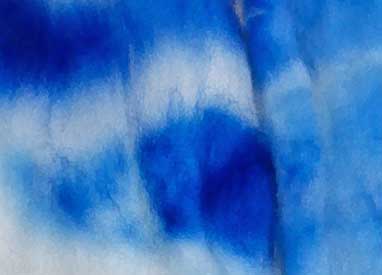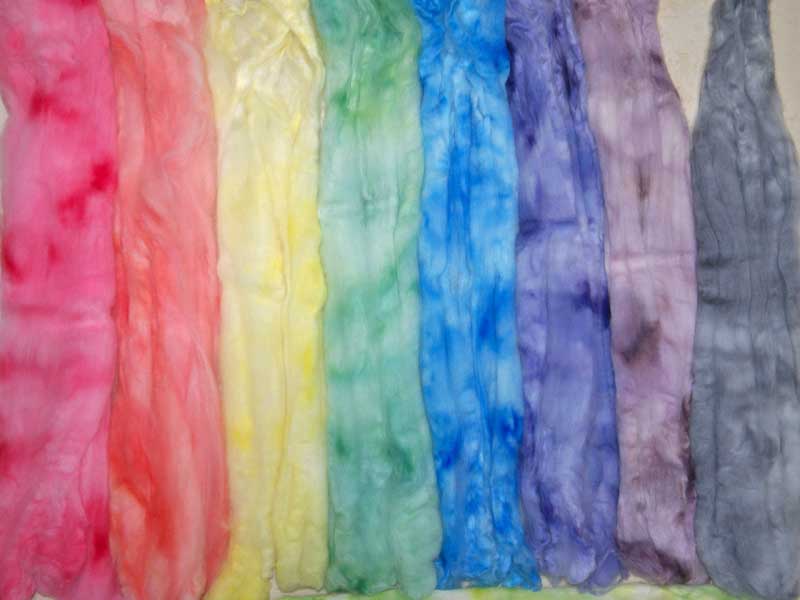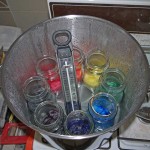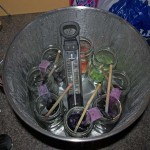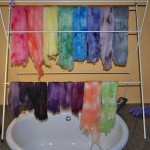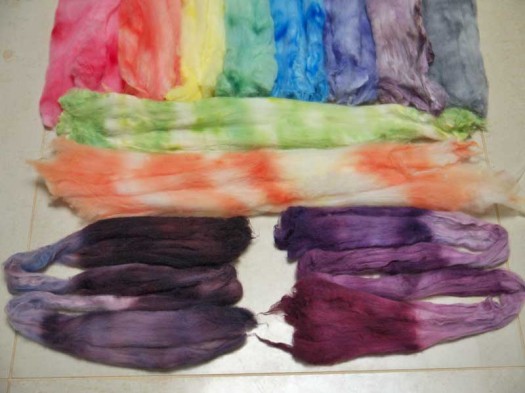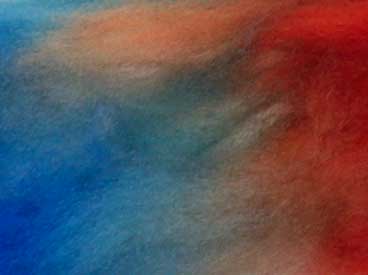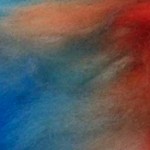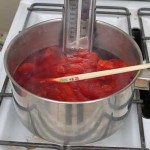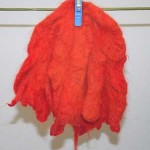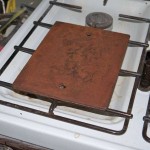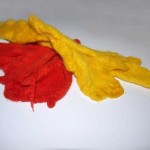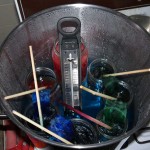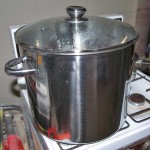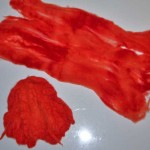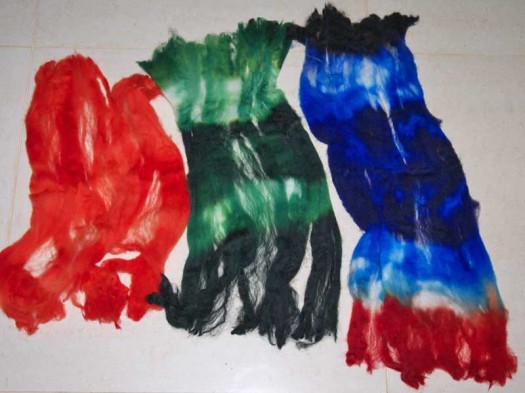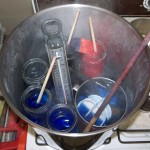
Last weekends dye session was surprising and interesting to say the least.
The actual dyes for the most part were little different from the previous two sessions, only the pre-treatment techniques changed.
This time the Merino roving was twisted, knotted, tied and clamped to see what the application of a few Shibori techniques would produce with acid dyes.
As an aside, the Procion MX dyes that were made up two weeks ago to “age” were brought into play in a demonstration of using the chemically reactive MX dyes as acid dyes.
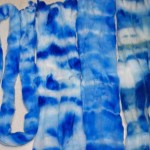
Pieces 1 to 4 – normal acid dyes
Four lengths of Merino roving were either twisted, knotted, tied with twisty-ties or clamped between solid blocks prior to soaking in cold water. Once prepared they were transferred to their respective containers and the dye applied.
The first 3 roving pieces used the same amount and colour (blue with a dash of red) of dye, and dyed in jars that were placed inside the stock pot.
The clamped piece had to be dyed in a small saucepan as the clamps, ties and blocks made it too bulky to fit in a jar. It *just* fit in the stockpot with the rest of the jars. It had what was left of the mixed up blue dye so it got a bit more dye than the other three. It has also picked up a little tannin – the brownish colour – from the wooden blocks. Forgot that … should have used plastic or glass.
Procion MX Dyes – an interesting experiment
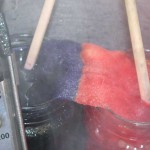
The Procion MX experiment however proved most intriguing. Two colours – orange and purple – had been mixed up two weeks prior and left to “age”. I had a long piece of roving, folded in half, with one half in the orange dye jar the other half in the purple dye jar, sitting side by side in the stockpot. Both jars were filled to the rim with extra water, and the roving was deliberately dragged from one jar to the other and back to blend the colours.
During the steaming process however, the colours seemed to “unblend” and form quite a distinct hard line where they “met”. Most curious.
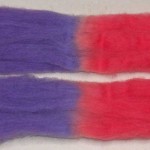
As the wool cooled the line became less distinct as some fibers pulled one way and others moved the opposite, but even dry there is no “brown” blended band.
Cool down
All pieces were left in the stockpot to cool overnight – a precaution that has saved every piece from felting since the first lessons learning experience.
The results once untied, rinsed and dried were pleasing across the board. The Shibori pieces exhibited their distinctive contrasting areas of dyed and undyed wool, and the Procion MX experiment continues to intrigue with little to no blending at the colour change point.
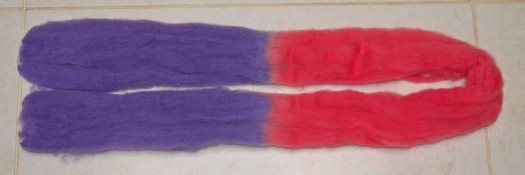
The Procion MX dyes did not produce the intensity of colour expected of them. This may have been a result of the cooler ambient temperatures slowing down the “ageing” process, or possibly a result of the extra water added to fill the jars. The remaining MX dye water has been preserved and bottled to “age” some more and will be re-used in a month or so.
The orange and purple MX experiment will be repeated in the coming months with some variations and at longer intervals to determine whether the delineation is repeatable and whether extra time and/or warmer ambient temperatures help in the dye ageing process.
